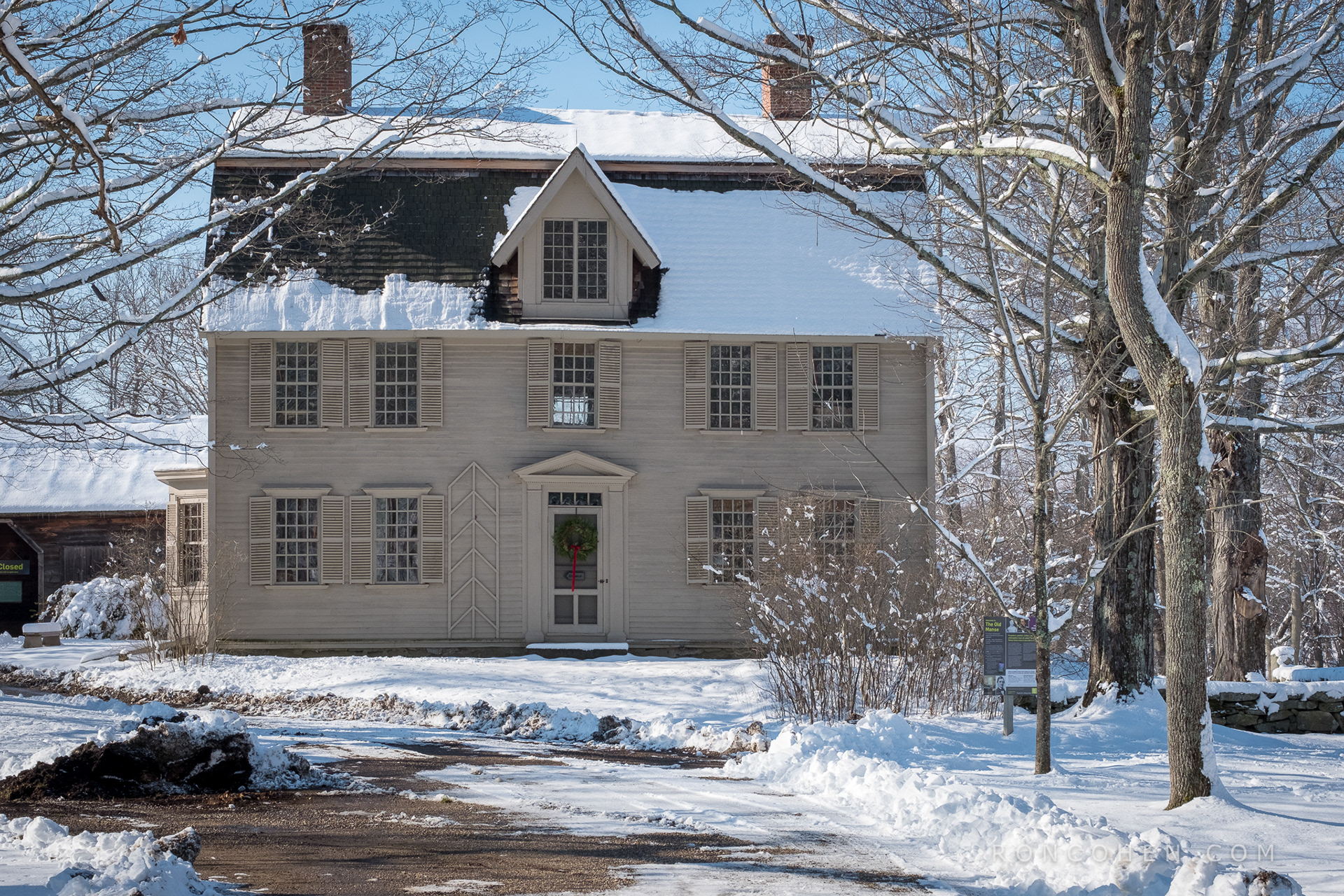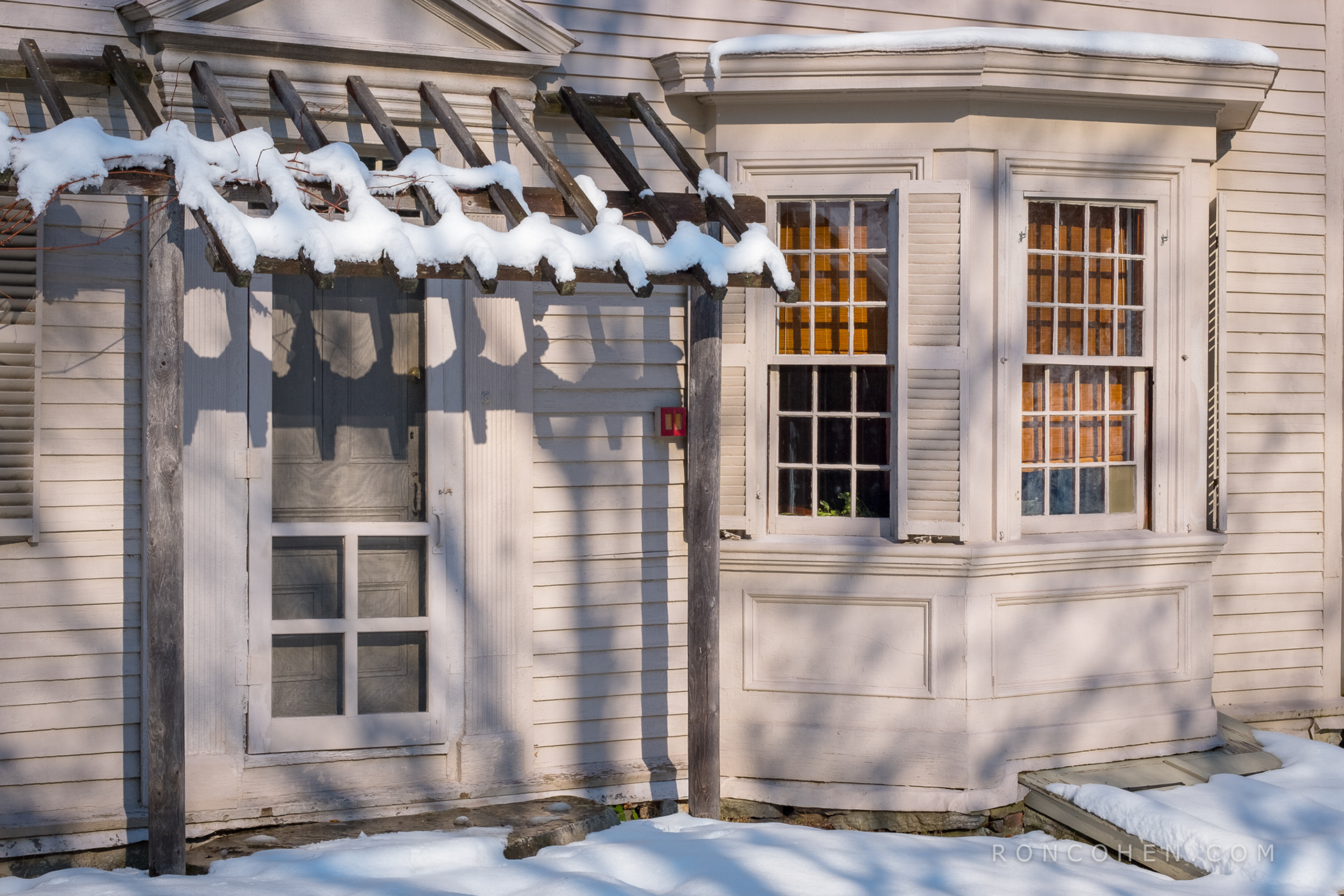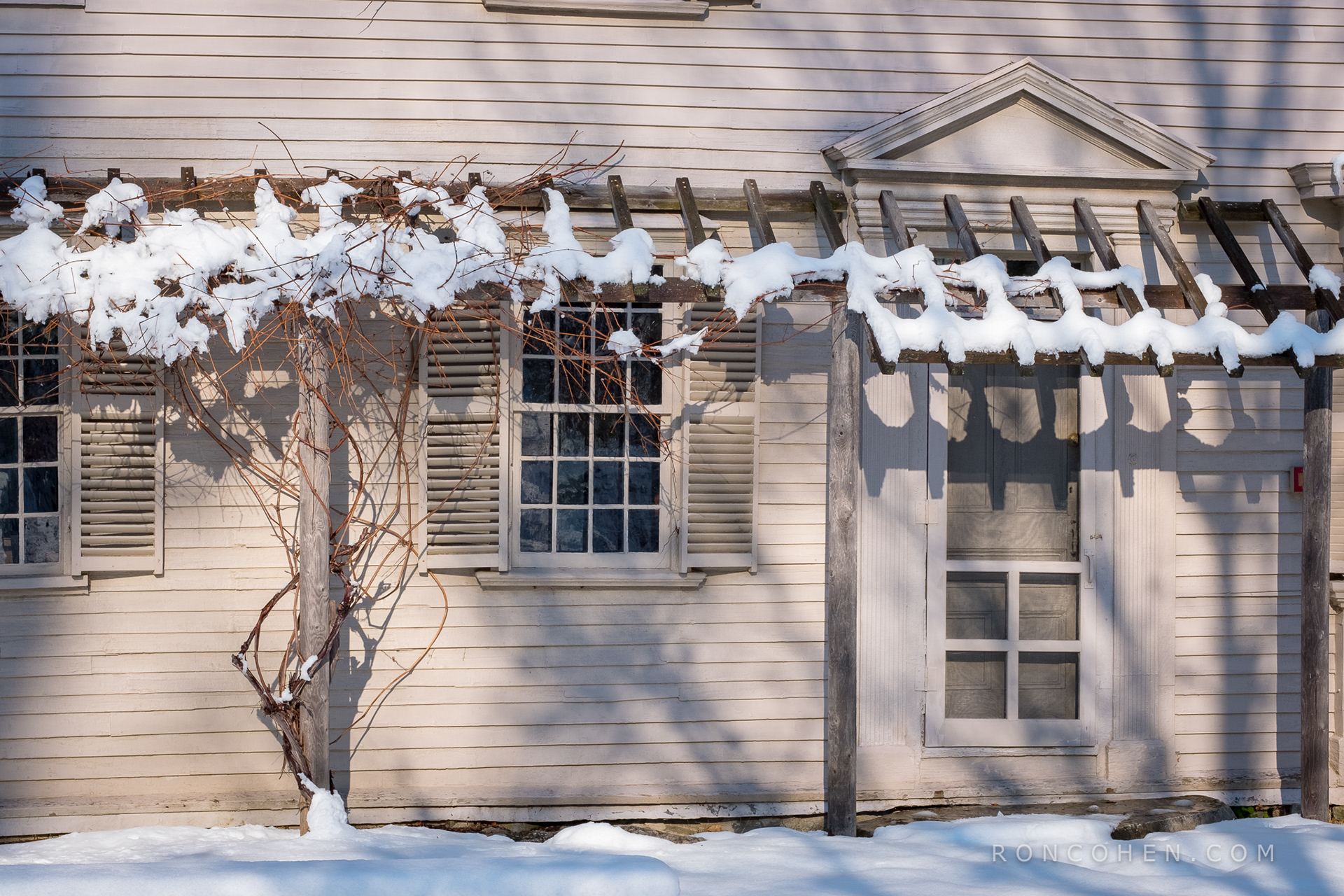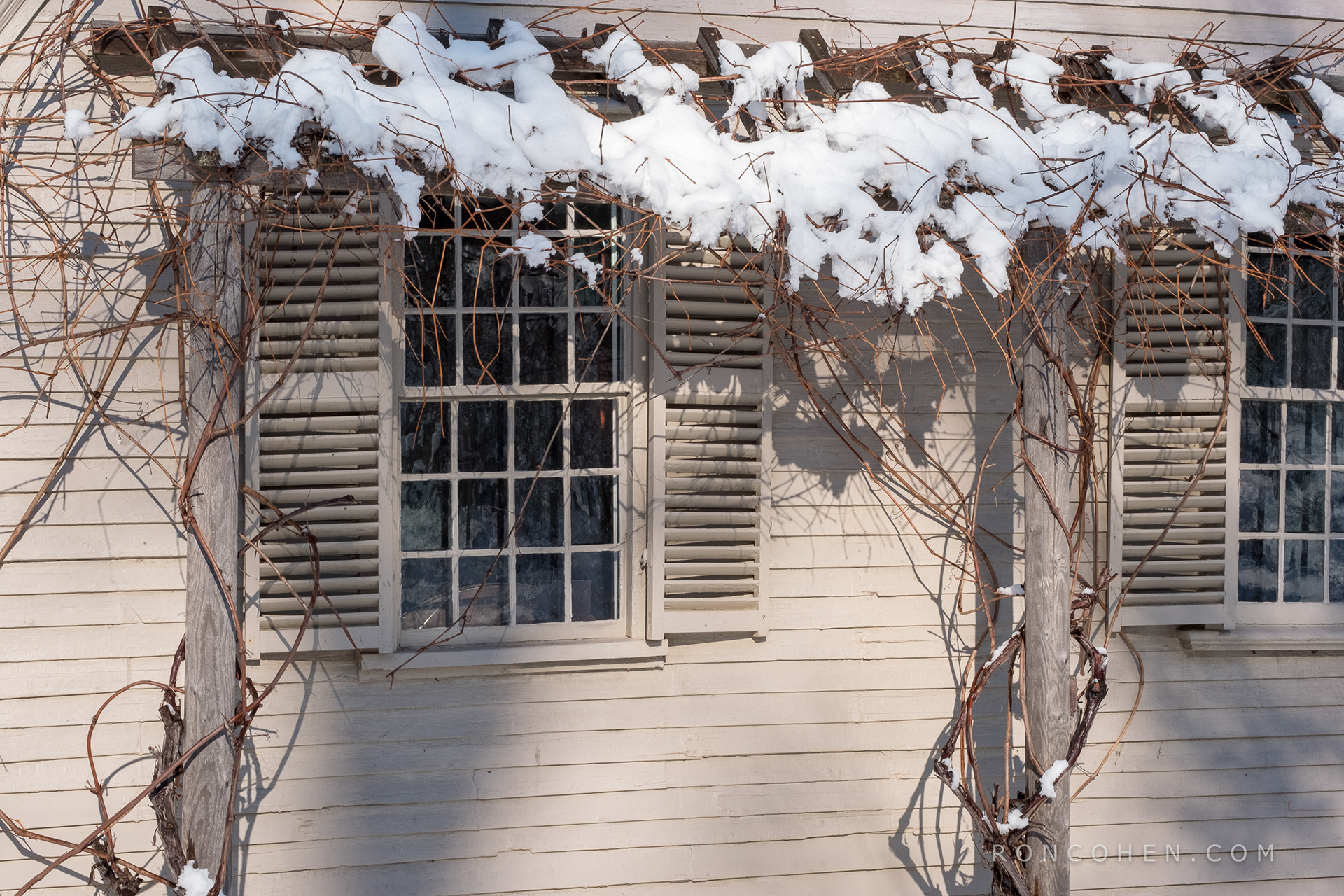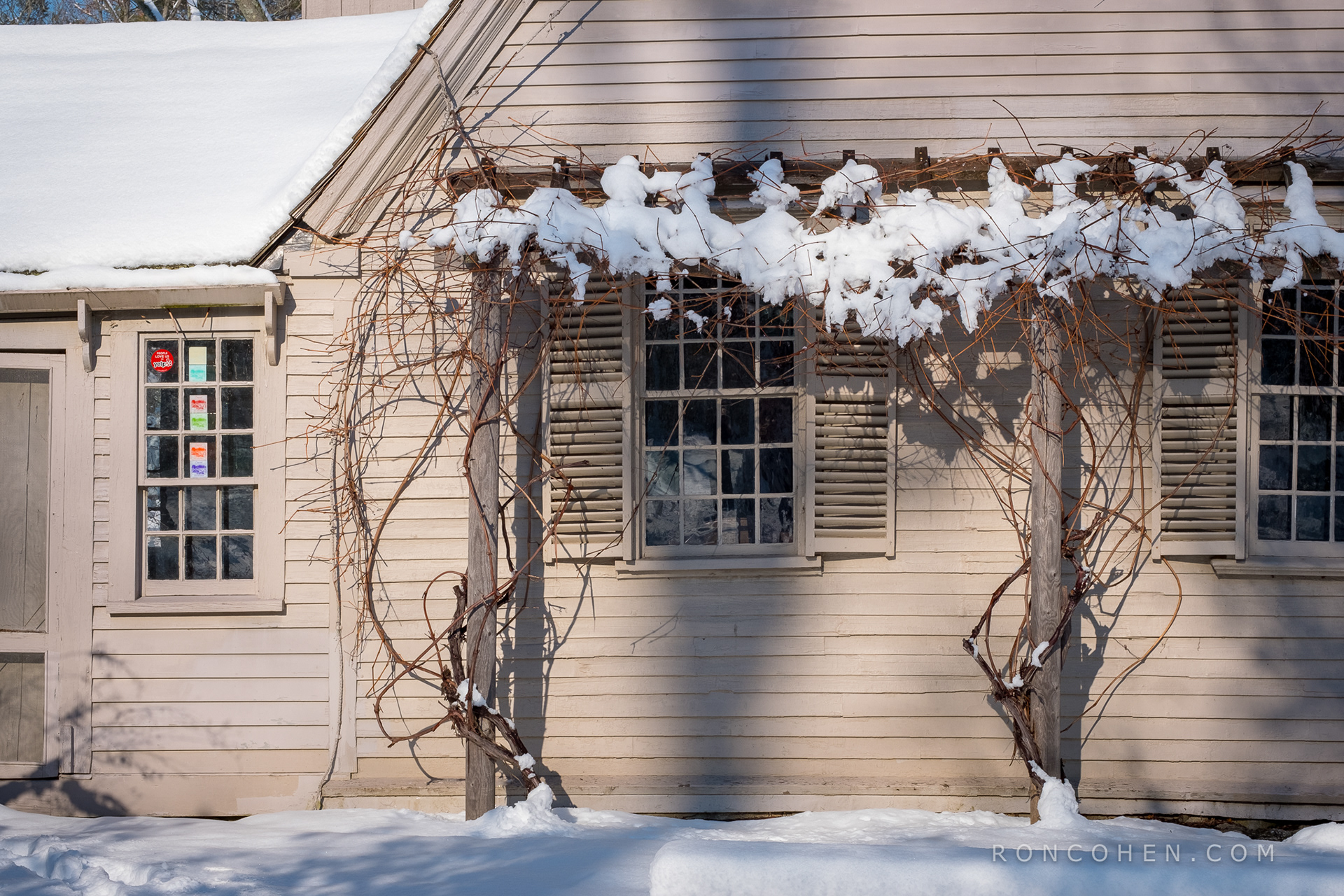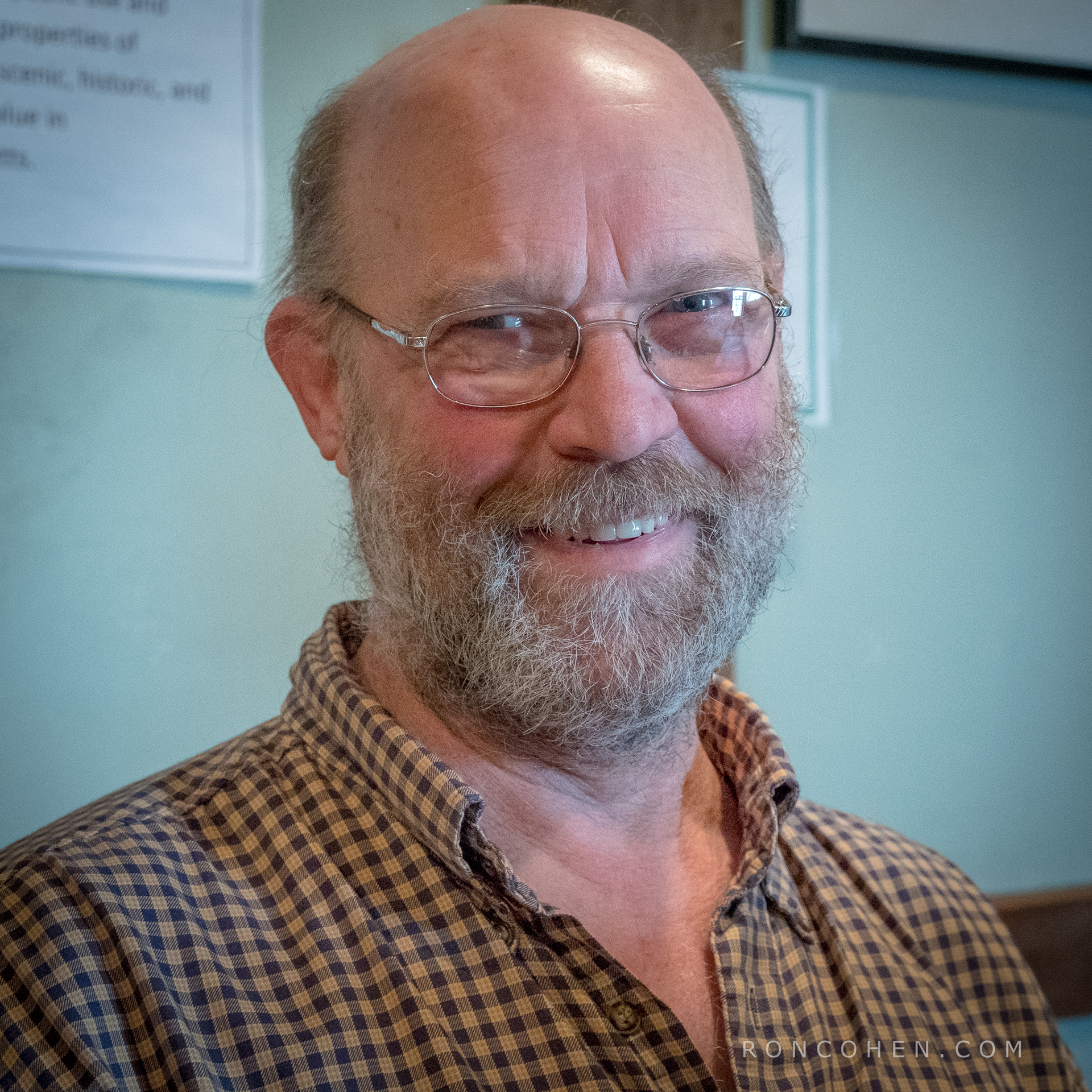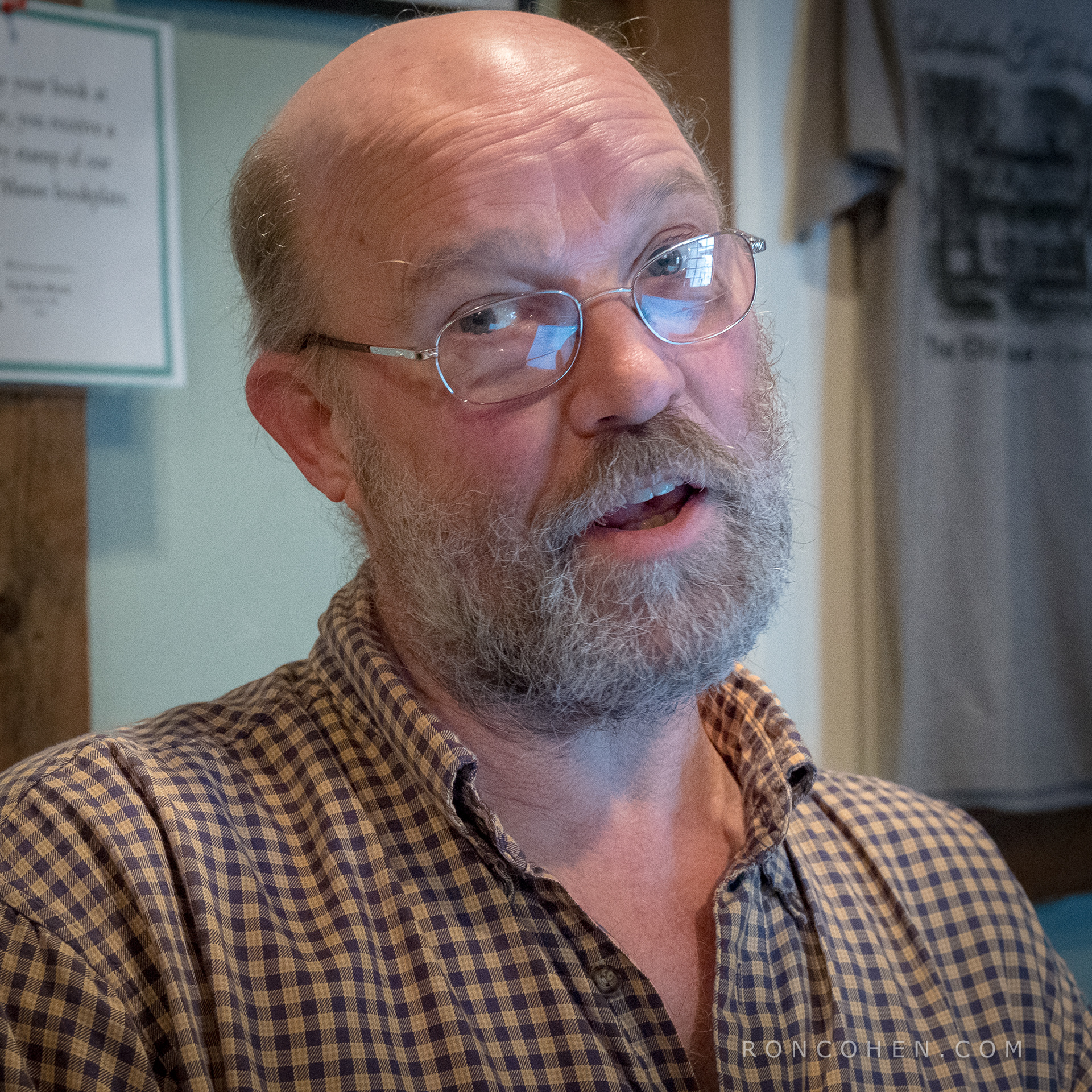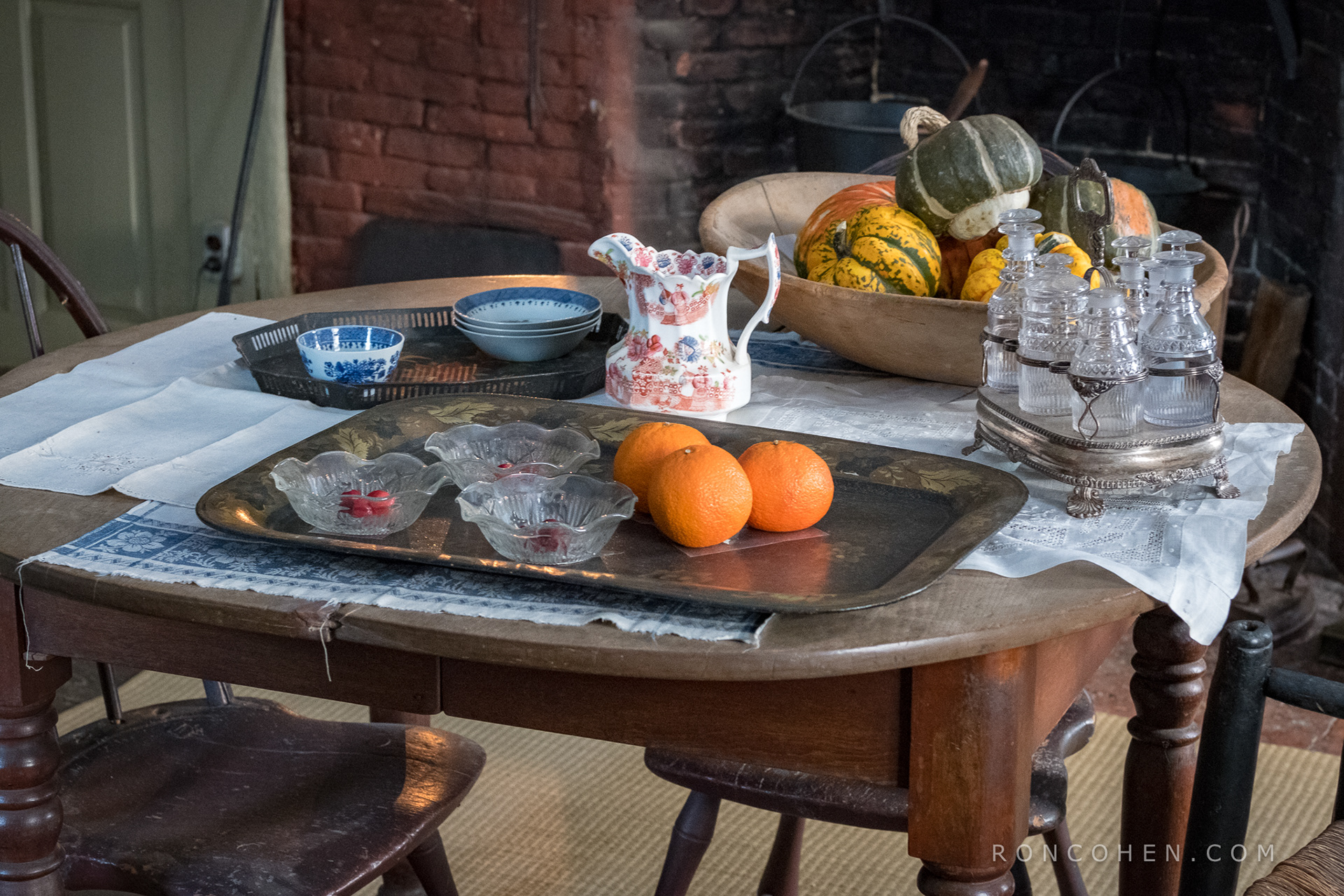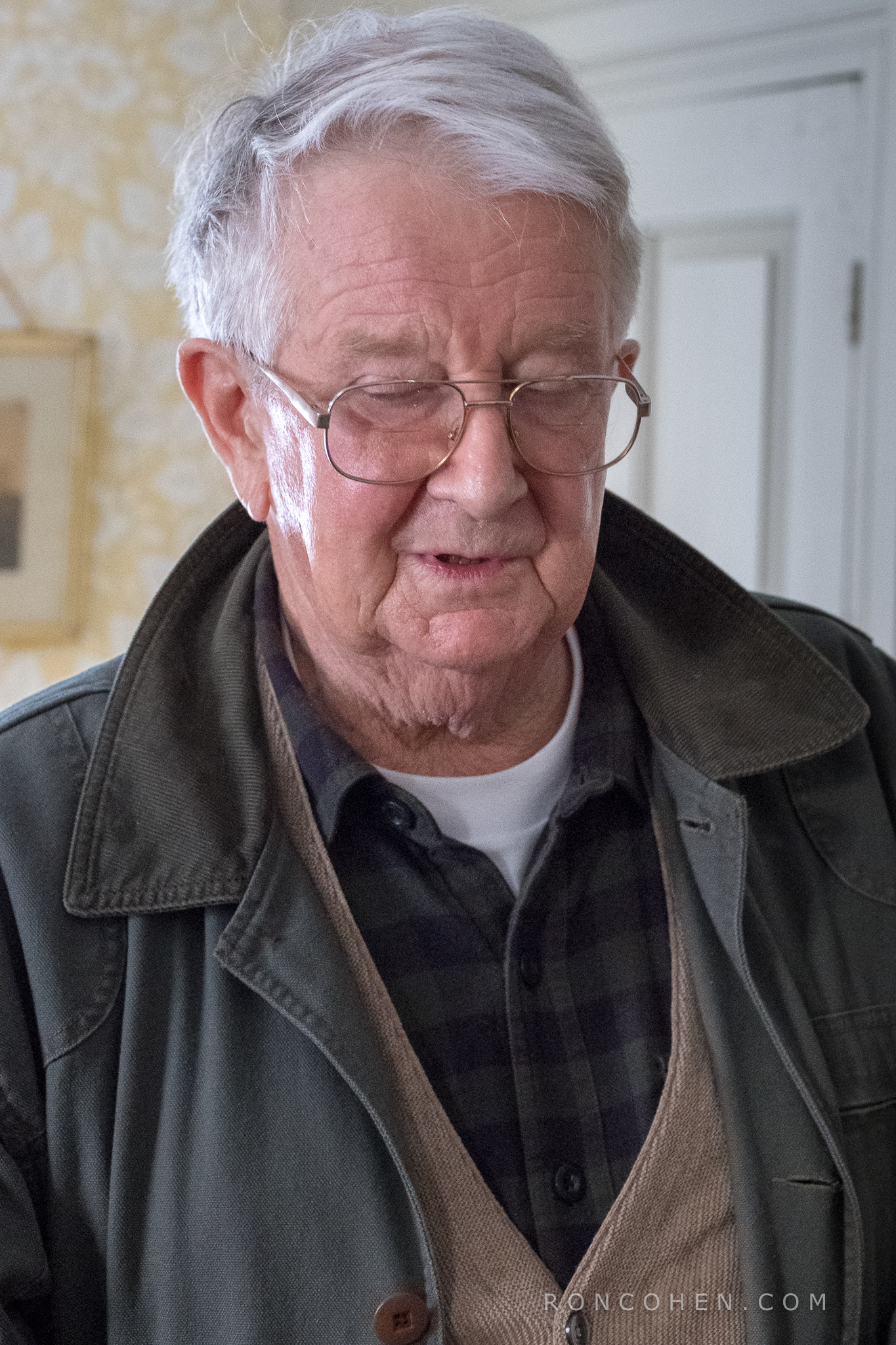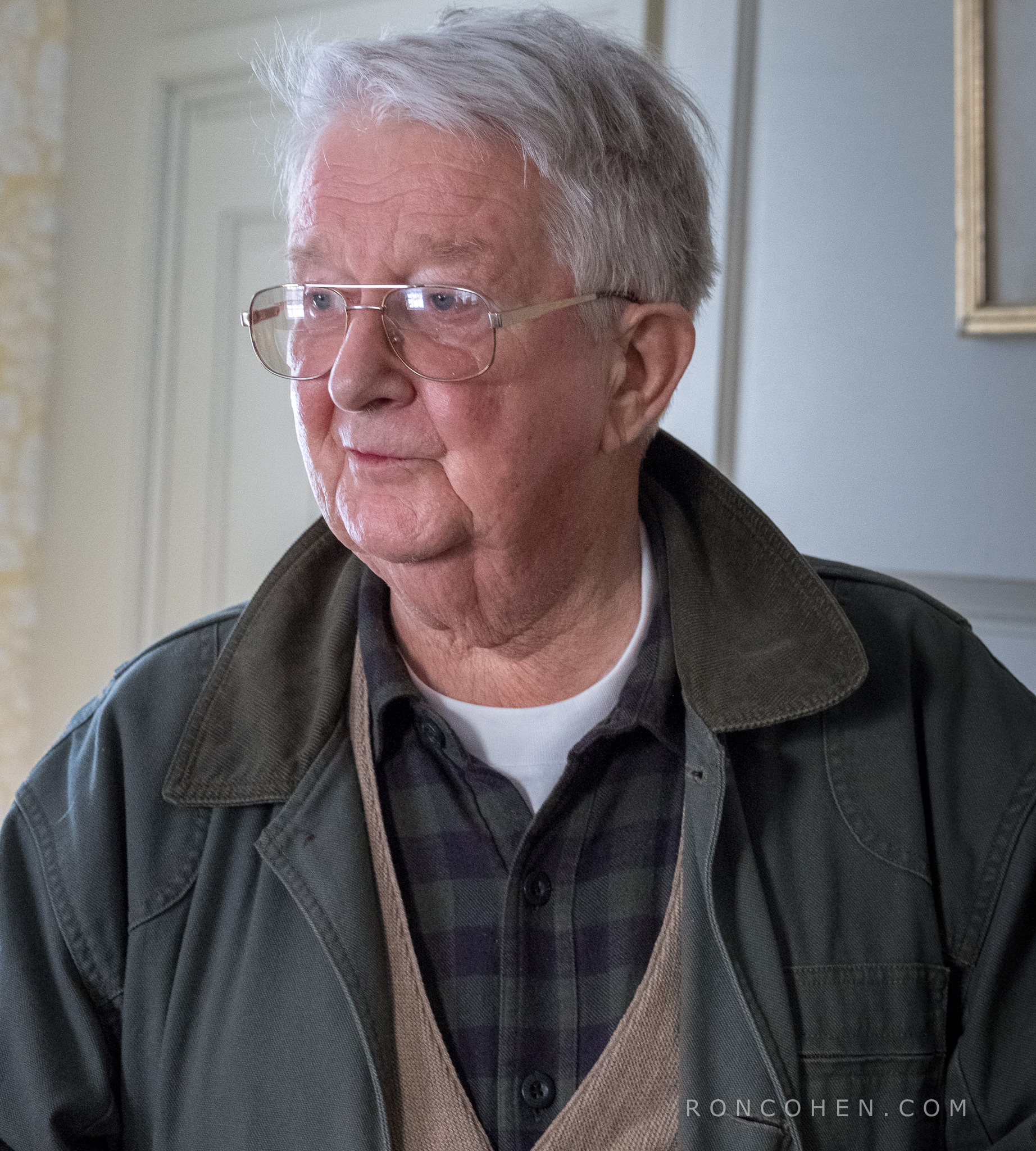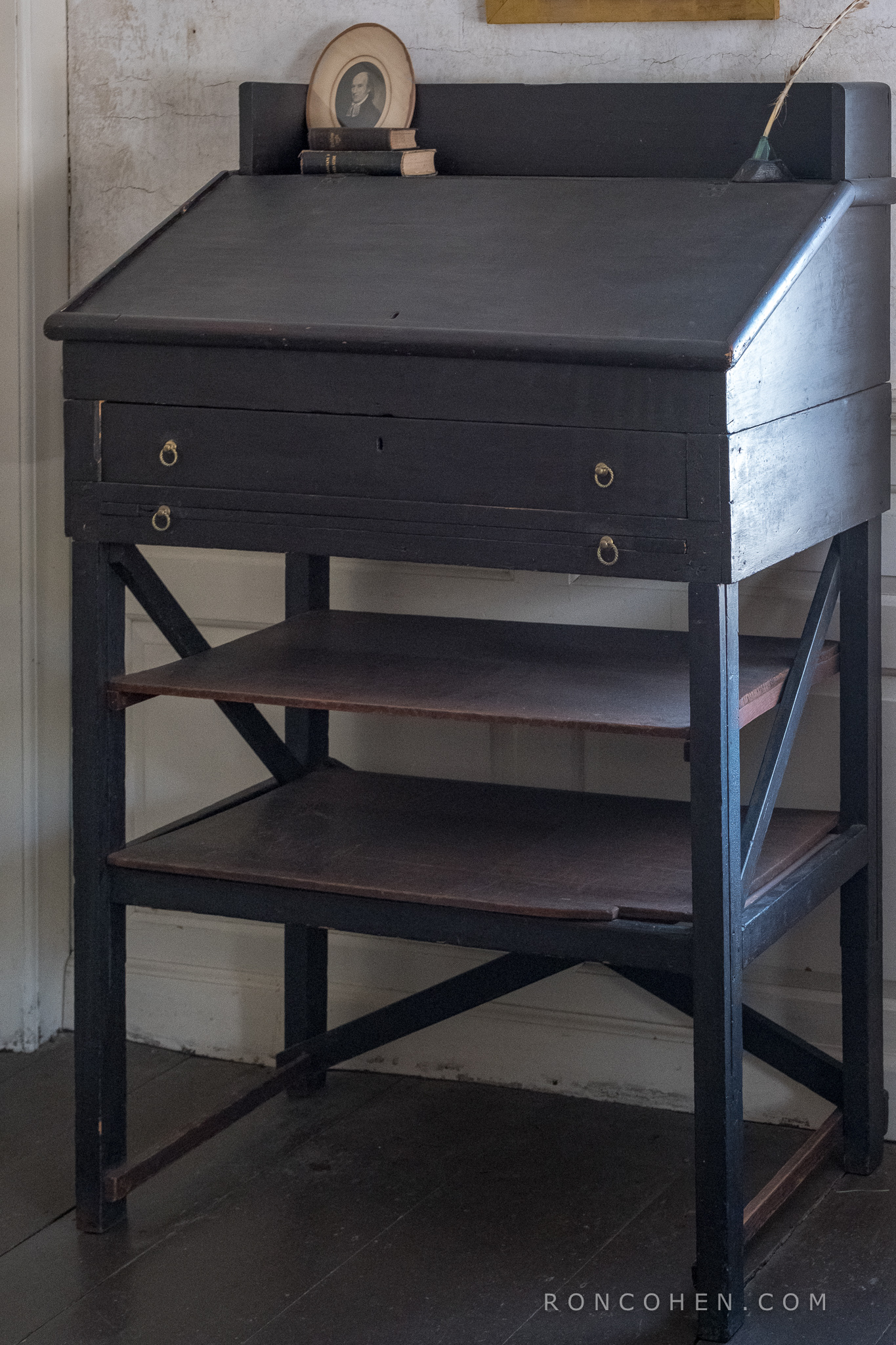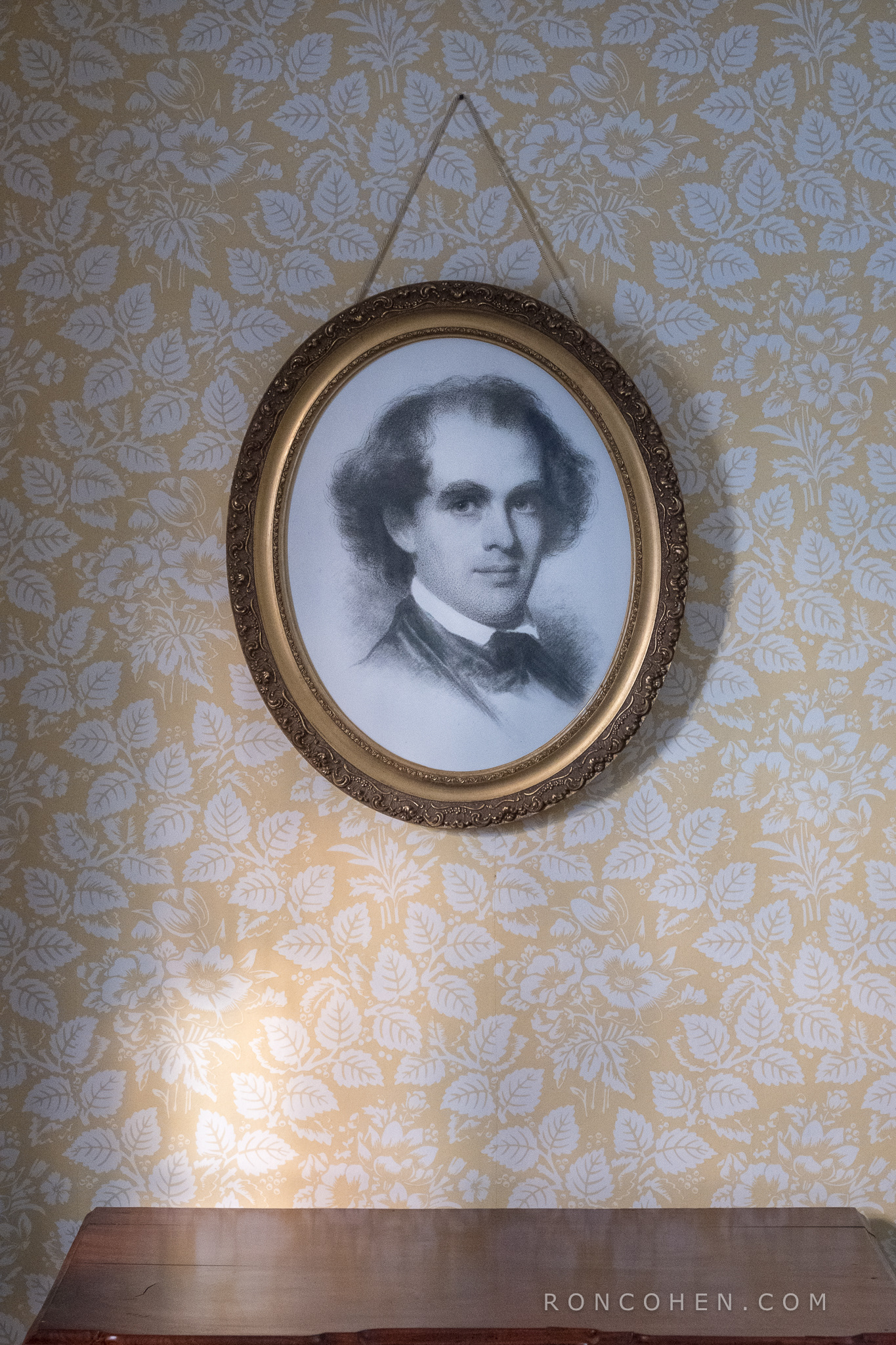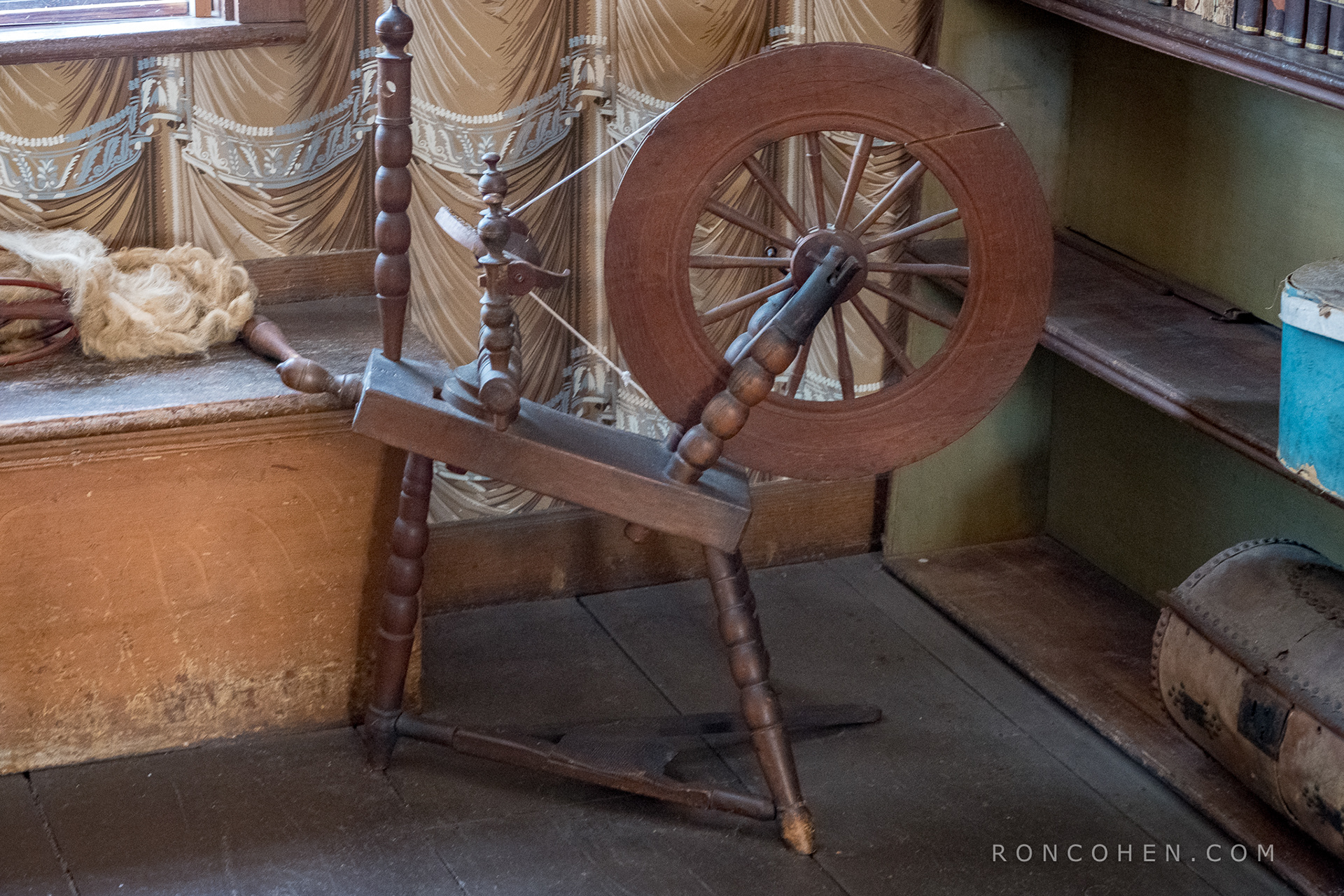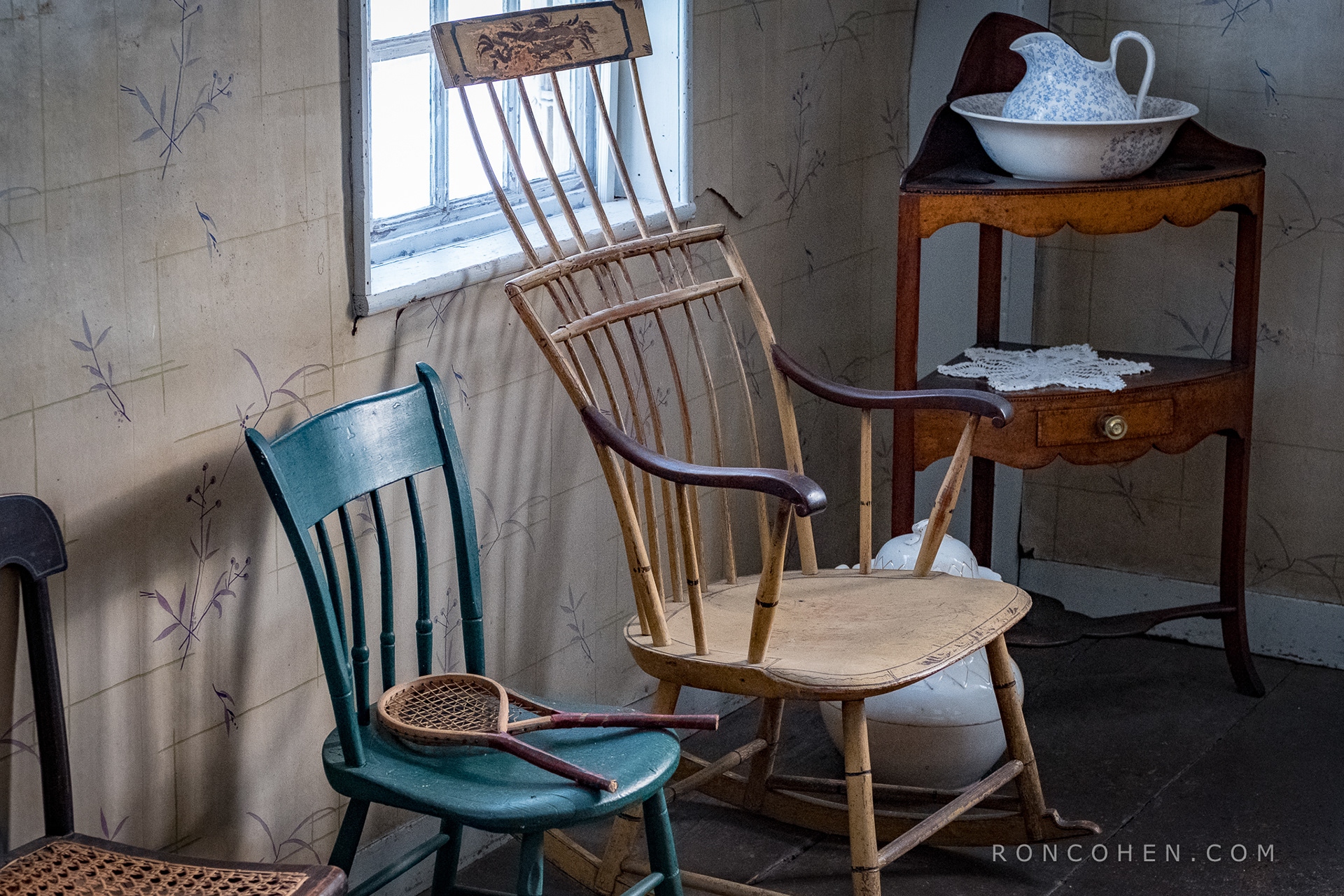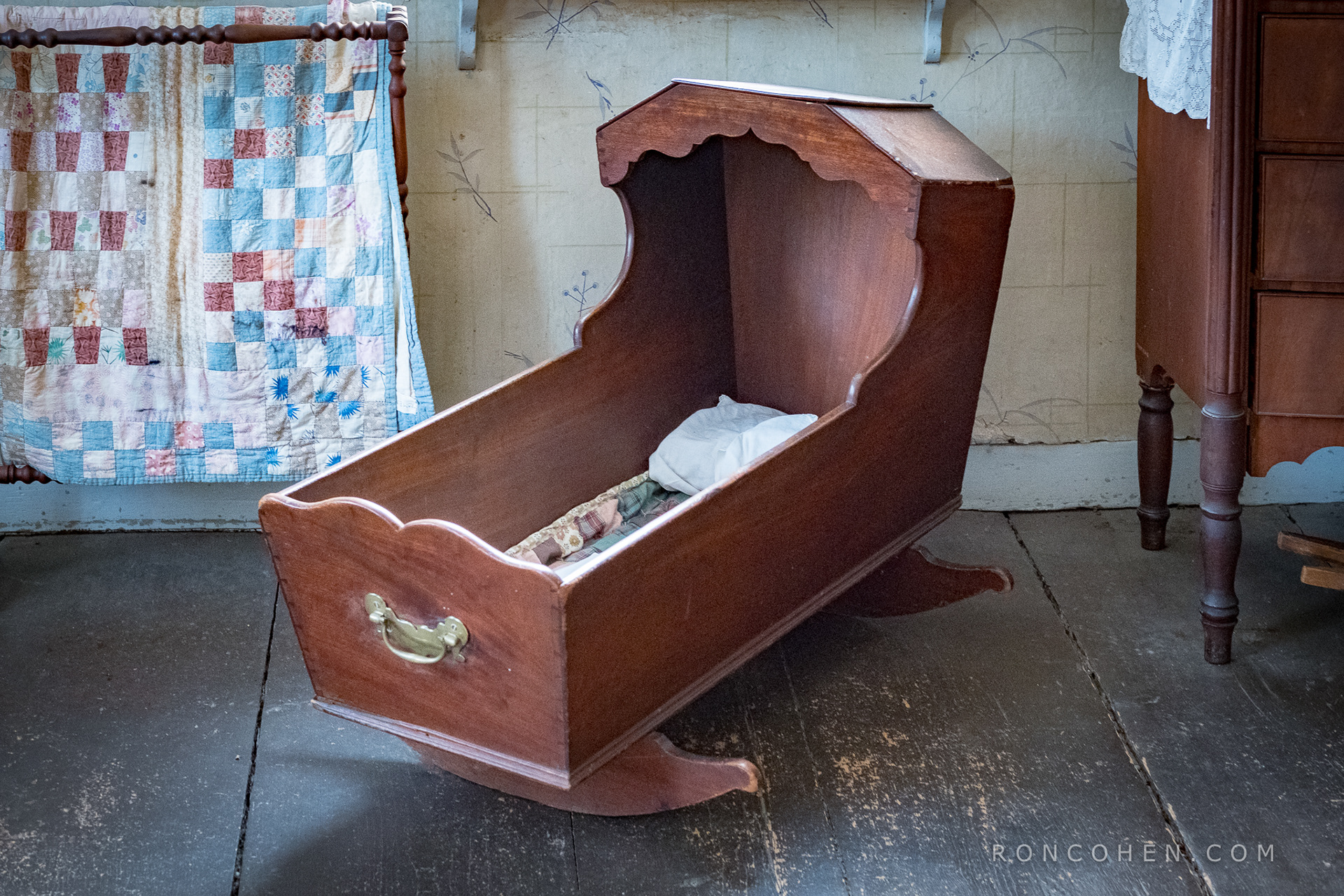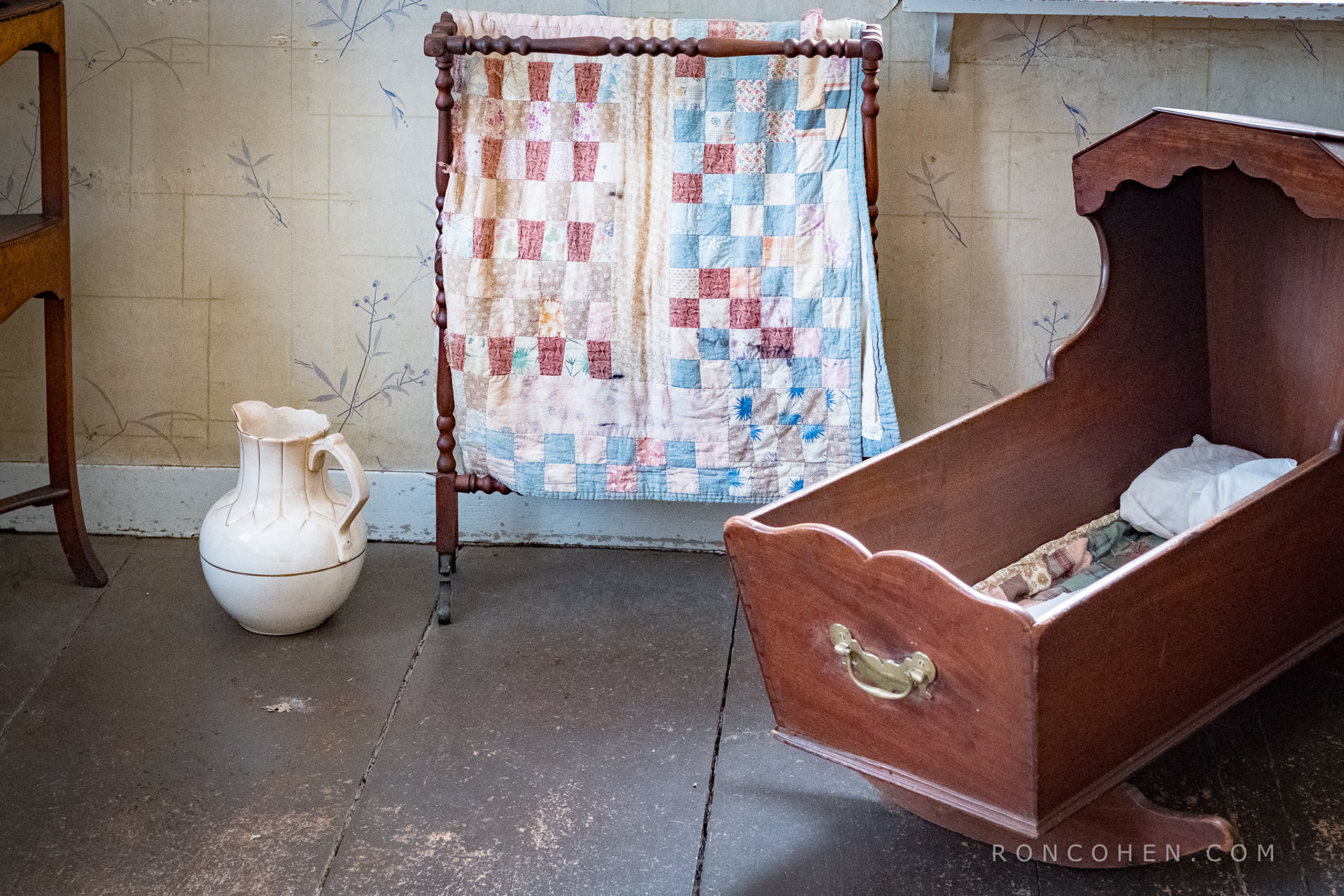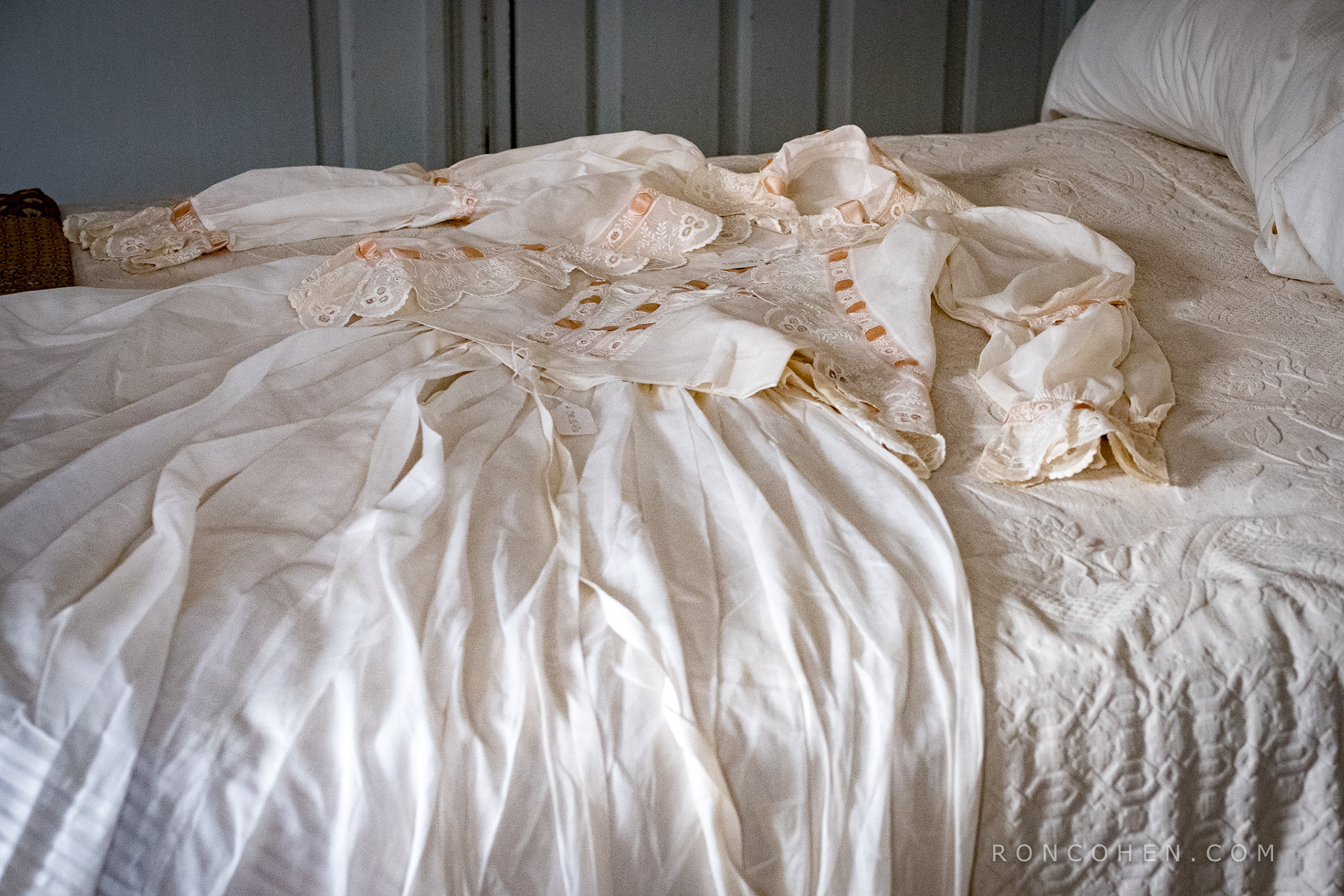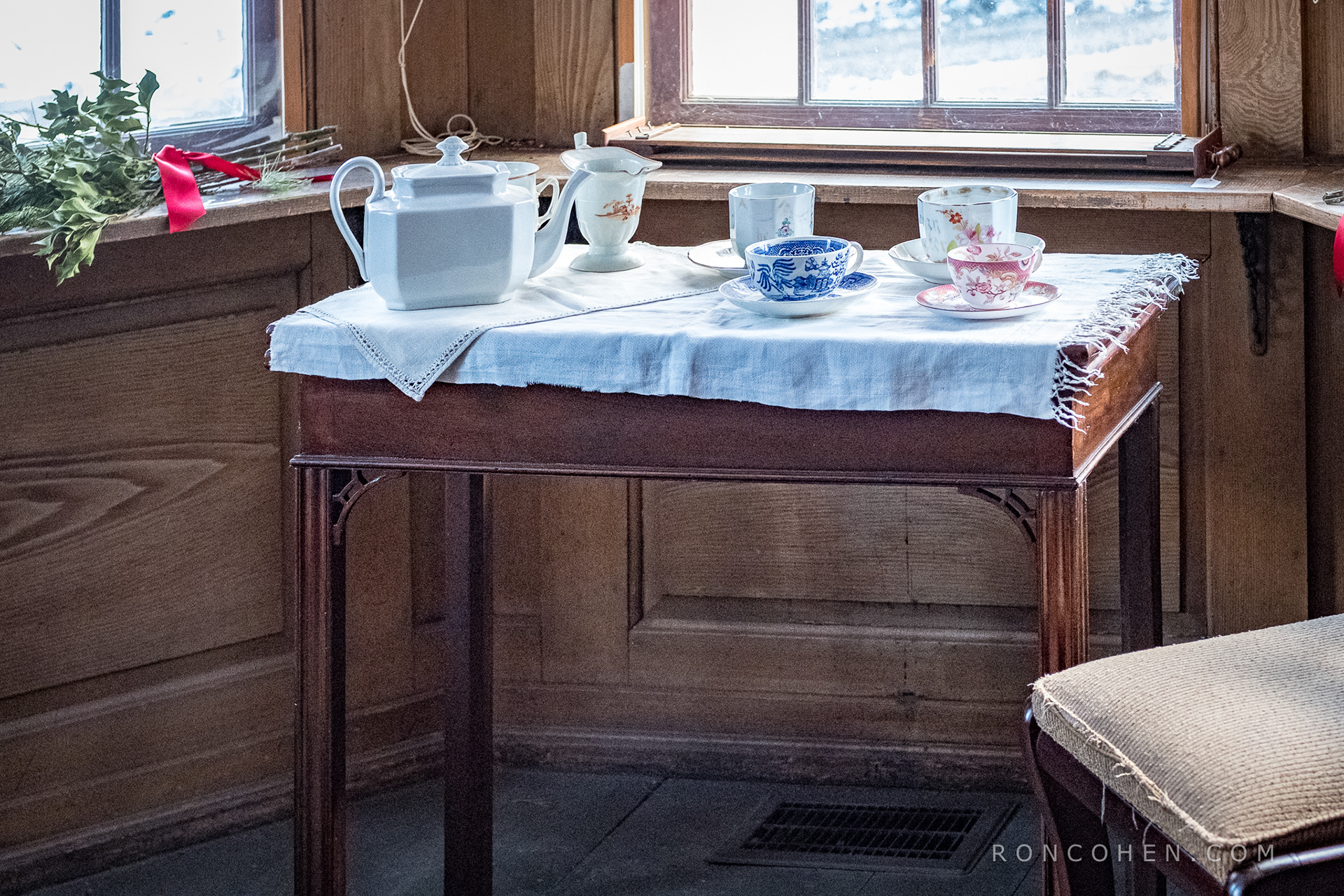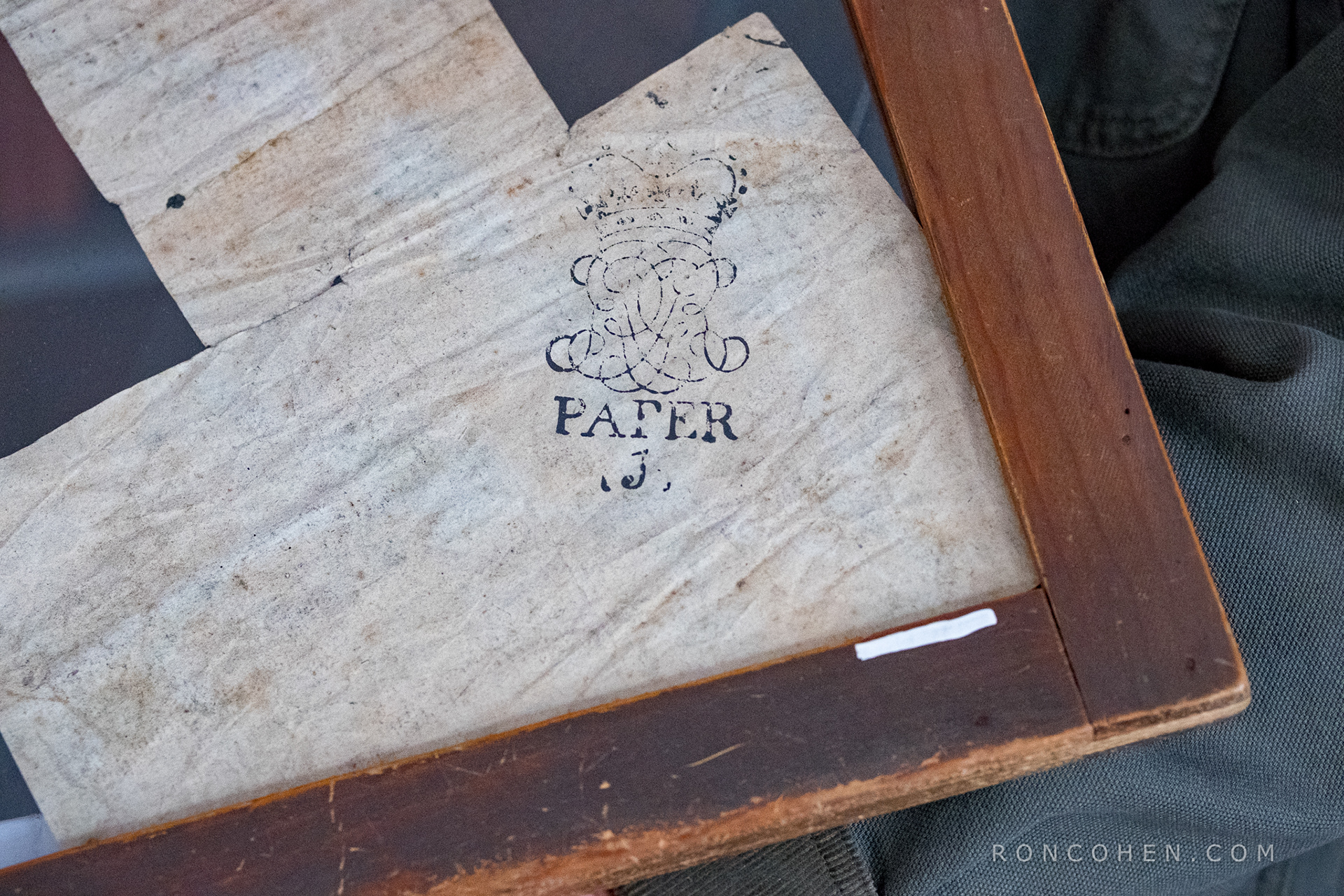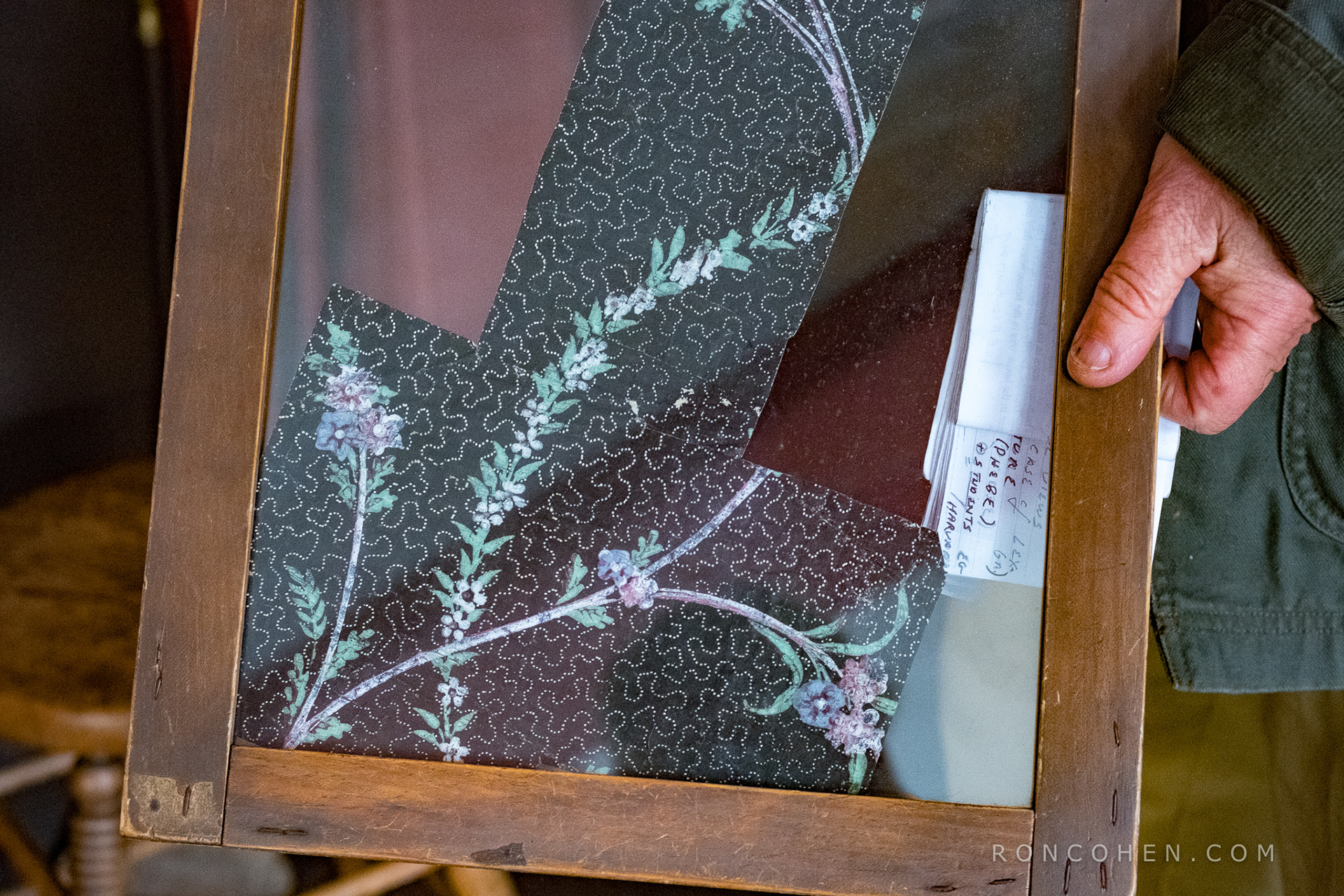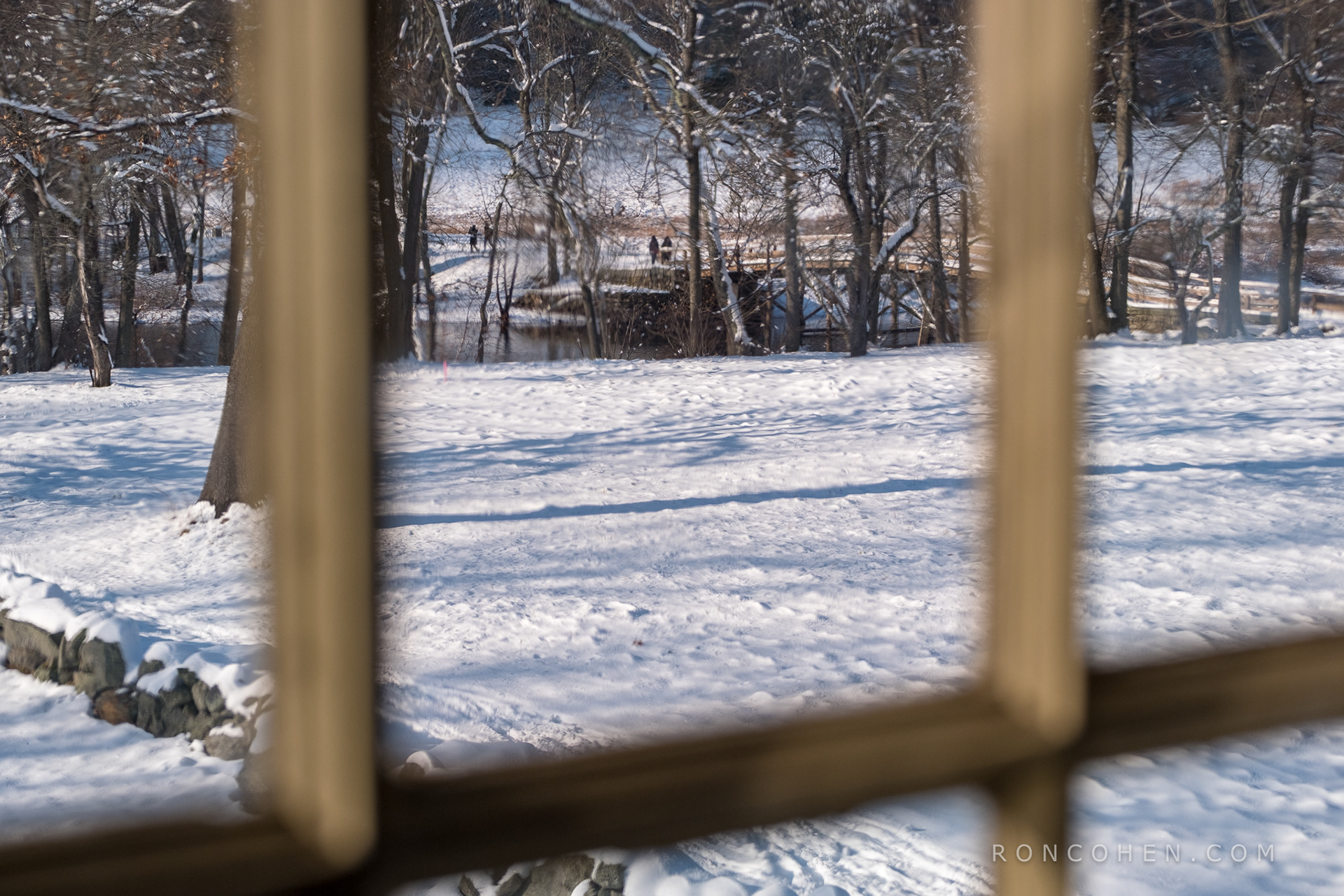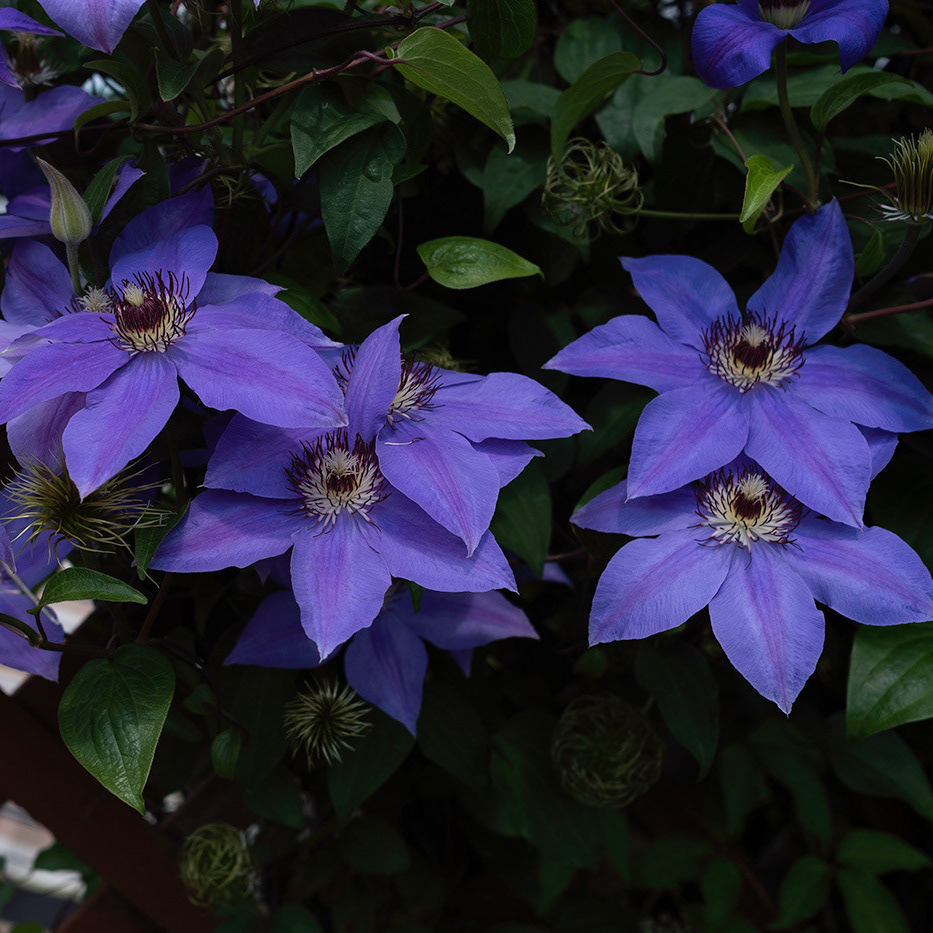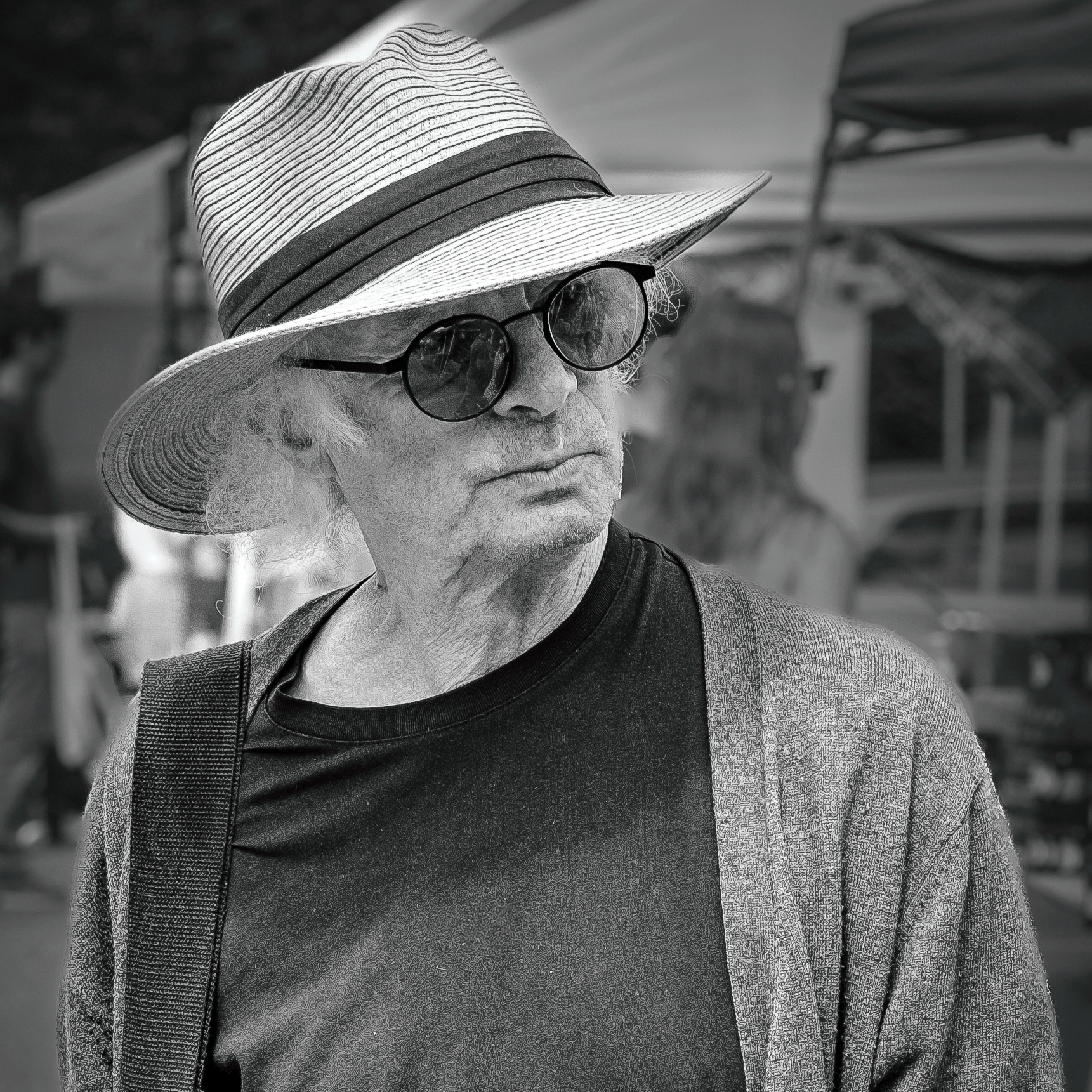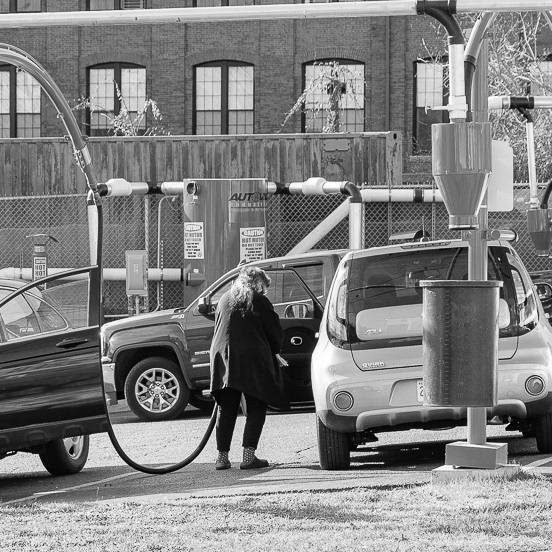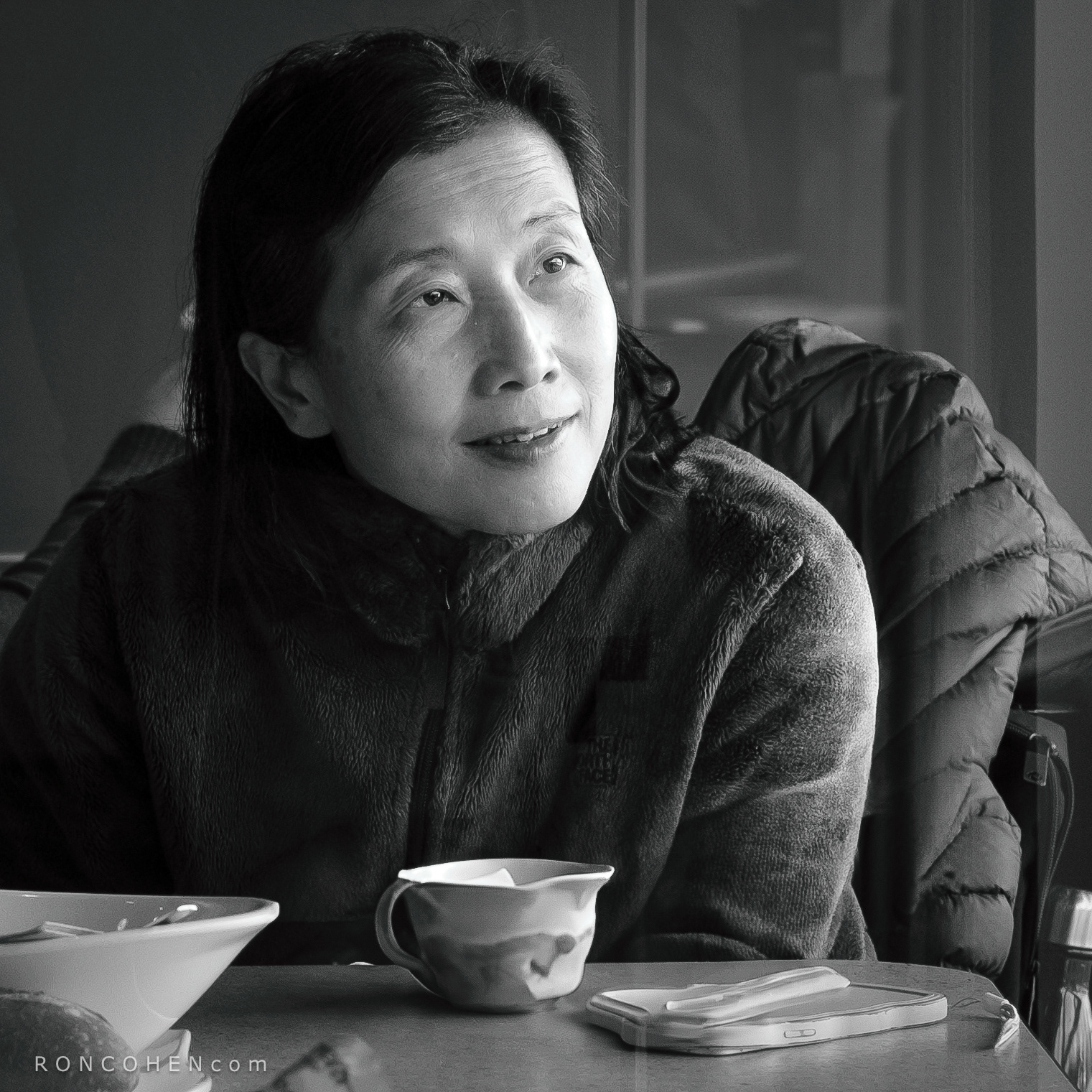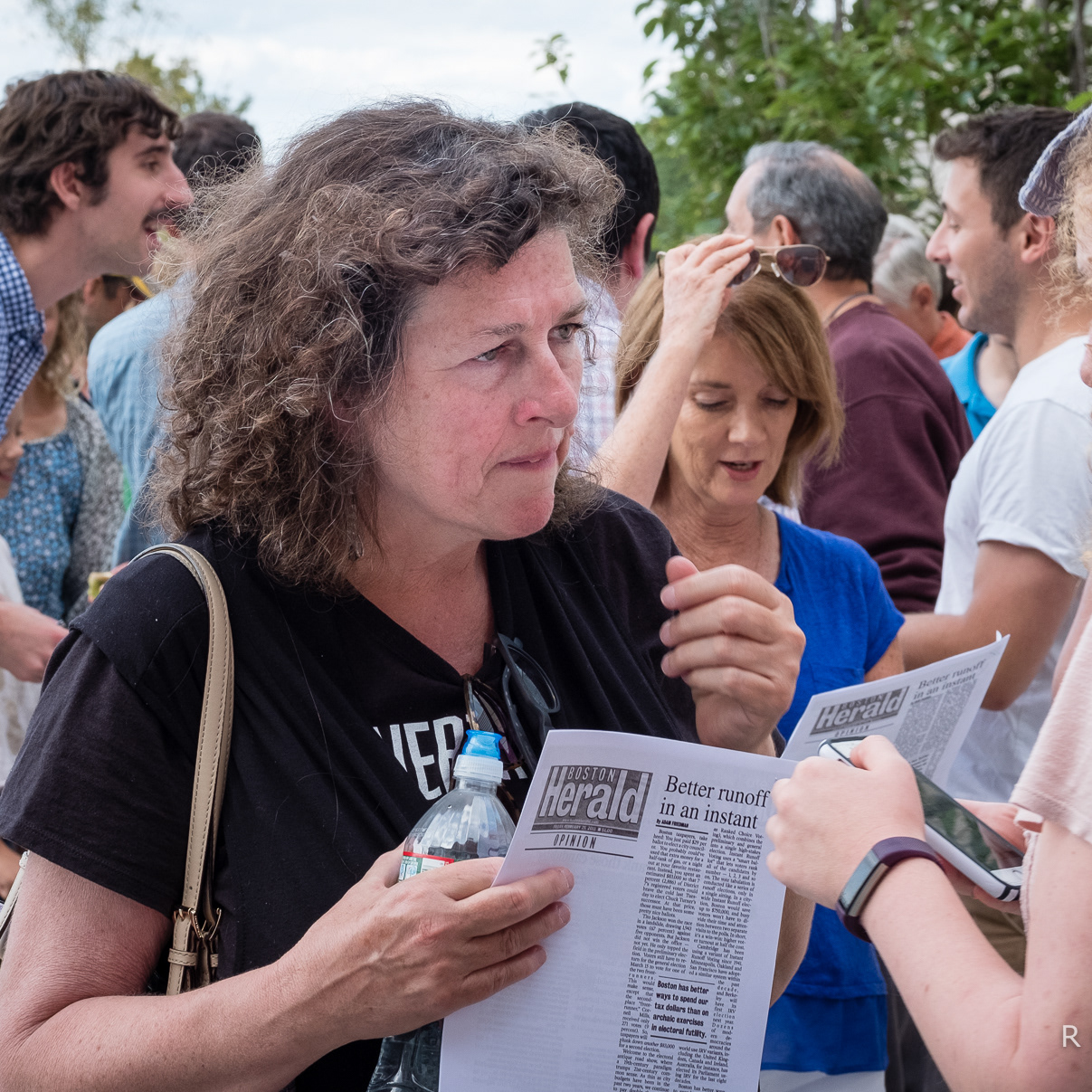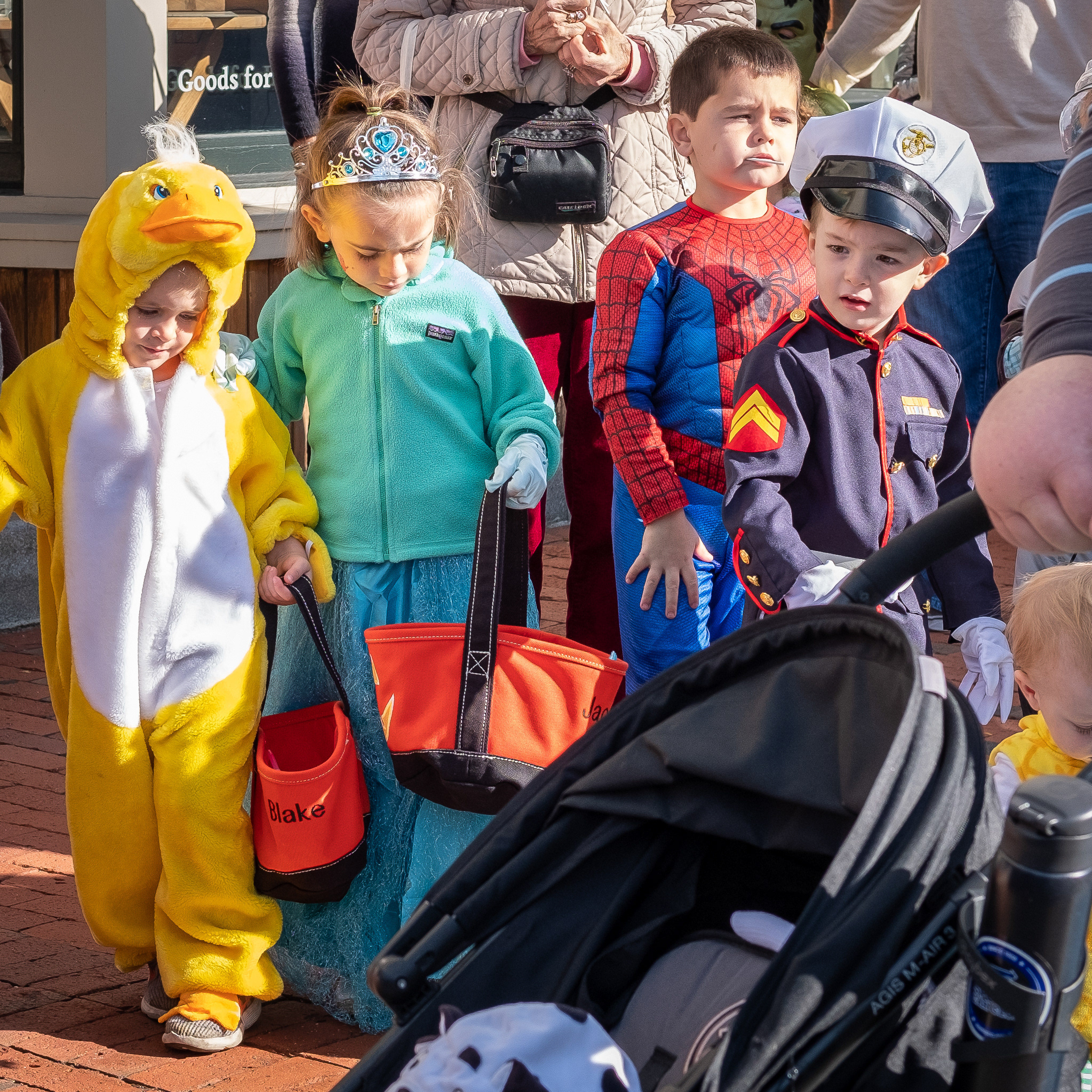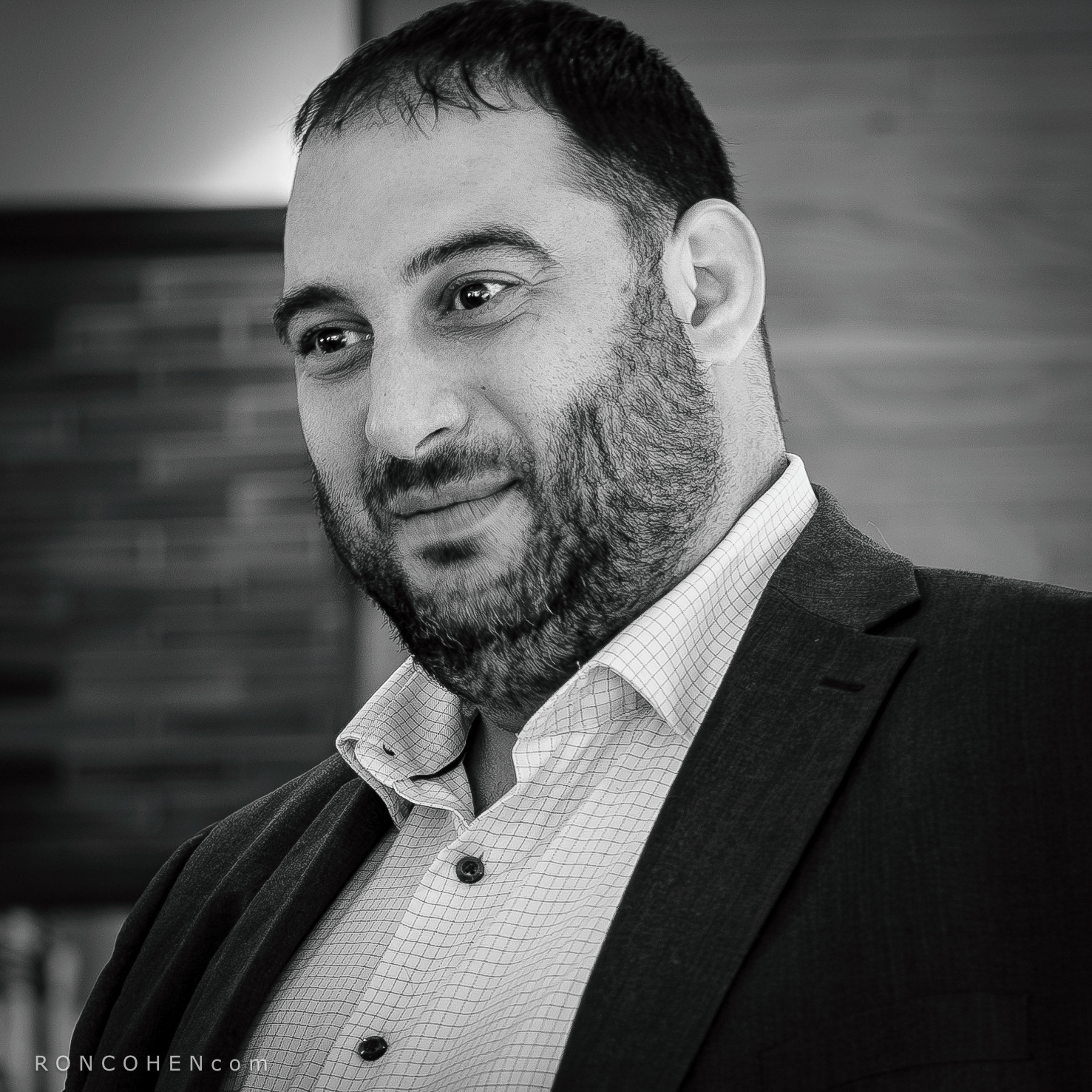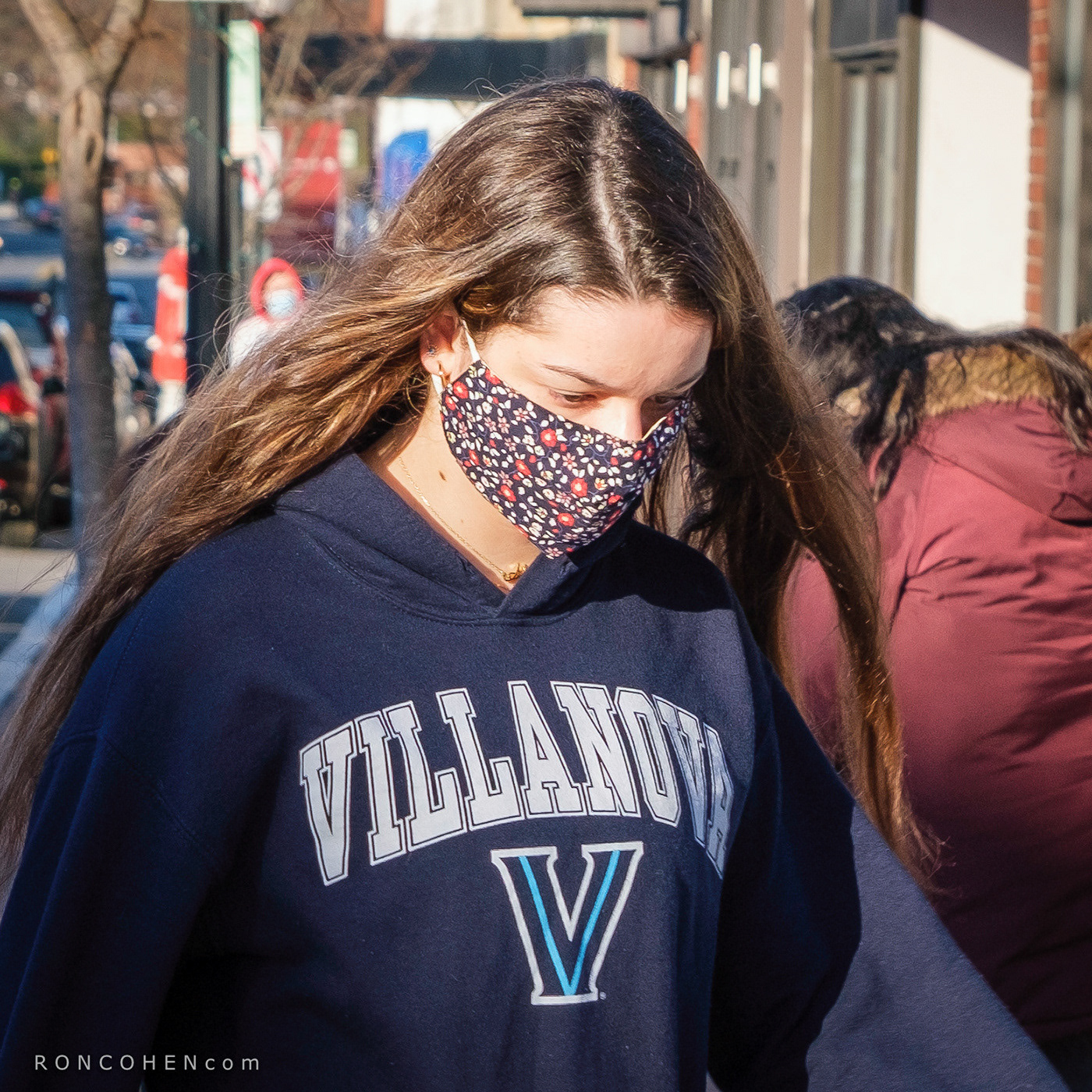The Old Manse is an iconic American house famous for its associations with the American Revolution, and later with Ralph Waldo Emerson, Nathaniel Hawthorne and the Transcendentalist movement. It was built for the Reverend William Emerson, grandfather of Ralph Waldo. Here’s a brief overview, from the official website:
Built in 1770 for patriot minister William Emerson, The Old Manse, a National Historic Landmark, became the center of Concord’s political, literary, and social revolutions over the course of the next century. In the mid-19th-century, leading Transcendentalists such as Bronson Alcott, Henry David Thoreau, and Margaret Fuller discussed the issues of the day here, with the Emerson, Hawthorne and Ripley families.
A handsome Georgian clapboard building, The Old Manse sits near the banks of the Concord River among rolling fields edged by centuries-old stone walls and graced by an orchard. From upstairs, you can look out over the North Bridge, where the famous battle of April 19, 1775, took place. Ralph Waldo Emerson and Nathaniel Hawthorne both called the Manse home for a time – and each found inspiration here. Emerson would draft his famous essay “Nature” from an upstairs room, and Hawthorne would write a tribute to the homestead called Mosses from an Old Manse. Hawthorne and his wife, Sophia, started their married life here, and you can still see the poems they wrote to each other, etched on the Manse’s window panes. The heirloom vegetable garden, which has been recreated today, was originally planted by Henry David Thoreau in honor of the Hawthornes’ wedding.
A handsome Georgian clapboard building, The Old Manse sits near the banks of the Concord River among rolling fields edged by centuries-old stone walls and graced by an orchard. From upstairs, you can look out over the North Bridge, where the famous battle of April 19, 1775, took place. Ralph Waldo Emerson and Nathaniel Hawthorne both called the Manse home for a time – and each found inspiration here. Emerson would draft his famous essay “Nature” from an upstairs room, and Hawthorne would write a tribute to the homestead called Mosses from an Old Manse. Hawthorne and his wife, Sophia, started their married life here, and you can still see the poems they wrote to each other, etched on the Manse’s window panes. The heirloom vegetable garden, which has been recreated today, was originally planted by Henry David Thoreau in honor of the Hawthornes’ wedding.
Further, fascinating reading can be found on these pages: Wikipedia, National Park Service, and The Boston Globe.
The photos that follow are by no means intended as an exhaustive catalog of the house and its contents, merely my personal impressions, what I saw and felt during a guided tour. The two men included were our genial, knowledgeable guides.
The emotional high points for me were captured in the last three photos, relating to the American Revolution. They show an actual revenue stamp on the back of wallpaper imported from England, a result of the infamous Stamp Act that gave rise to the rallying cry, "No taxation without representation."
The last photo is a view from what may be one of the most famous windows in history. I had to shoot hurriedly through the wavy, handmade glass, but if you peer closely you can just make out the Old North Bridge where the "shot heard round the world" was fired, as immortalized by Ralph Waldo Emerson in his famous 1837 poem, "Concord Hymn." This is the window from which the family of Rev. William Emerson was thought to have watched that fateful skirmish between British regular soldiers and the rebel militias. Whether the Reverend, himself, stayed with his family, or went out to join the men in the fields is a matter of speculation. What is without doubt: the "shot heard round the world" was the first shot to have killed a British regular soldier in the heat of battle. It signaled the start of the American Revolution, on April 19, 1775, and was memorialized in the first stanza of Emerson’s poem:
By the rude bridge that arched the flood,
Their flag to April’s breeze unfurled,
Here once the embattled farmers stood,
And fired the shot heard round the world.
Their flag to April’s breeze unfurled,
Here once the embattled farmers stood,
And fired the shot heard round the world.
Click any image to open slide show. Use keyboard arrows, or swipe, to move through slides:
